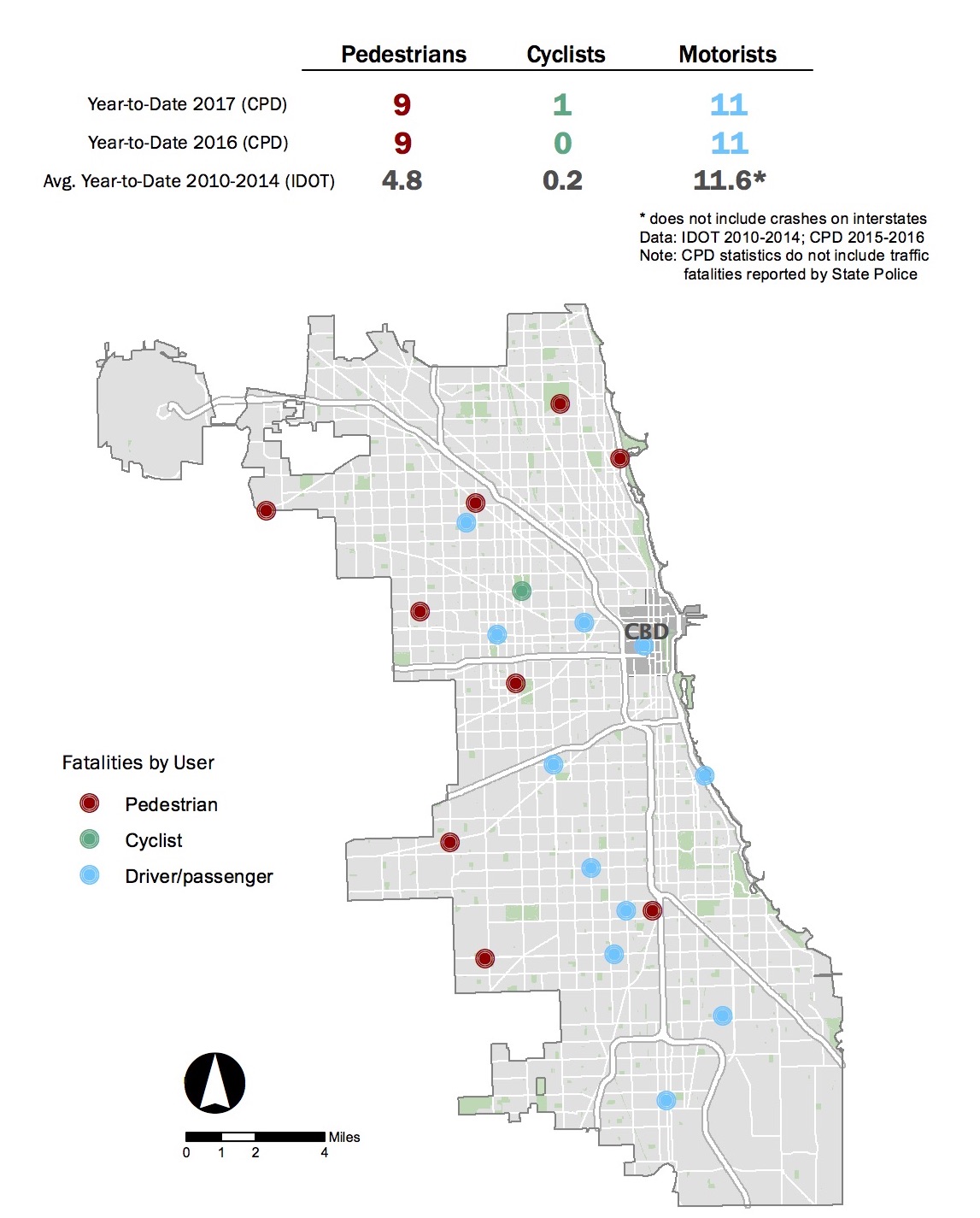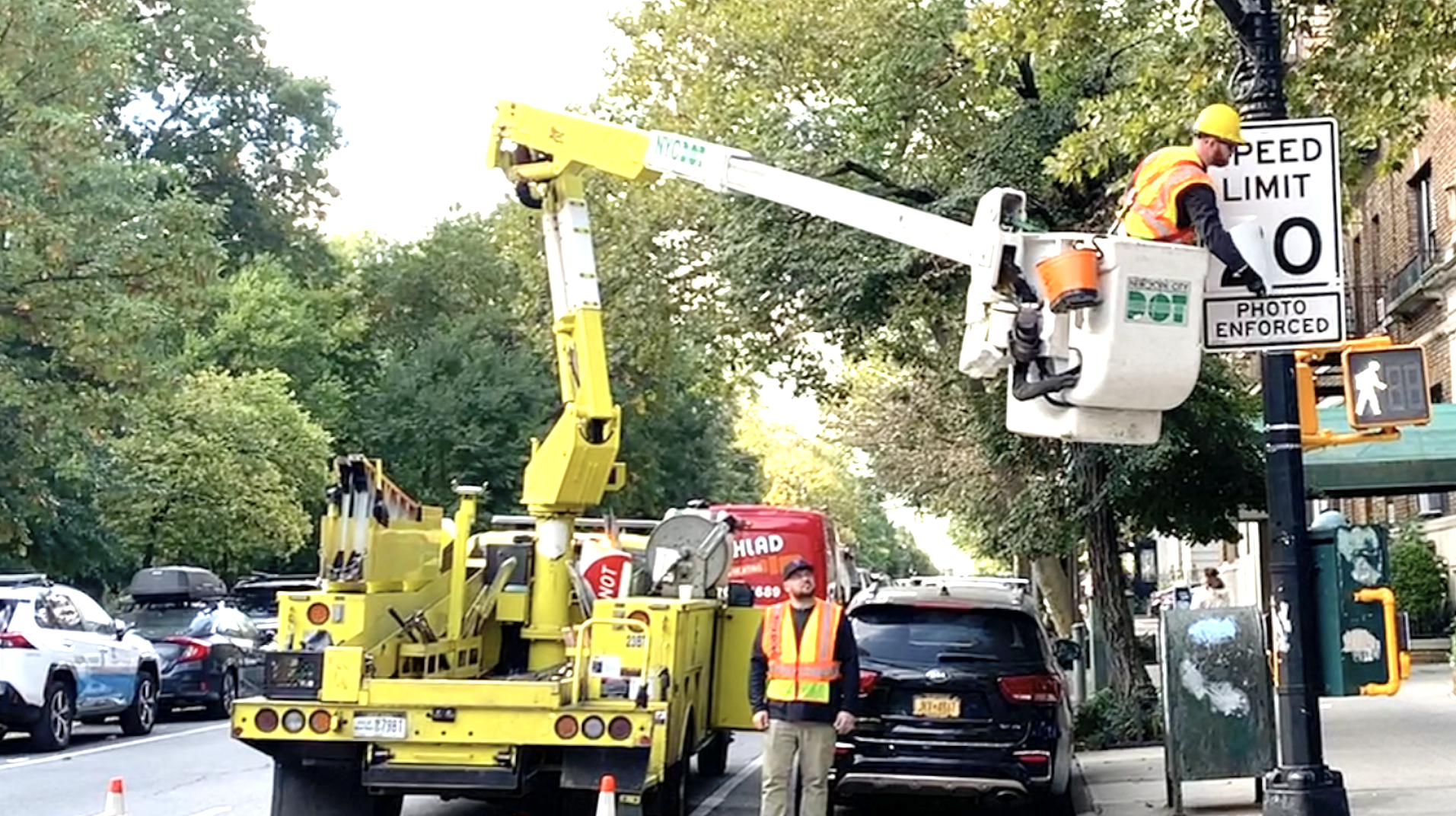At last week’s Mayor’s Bicycle Advisor Council meeting, transportation commissioner Rebekah Scheinfeld discussed the six 2016 bike fatalities. Half of the victims were female or gender-non-binary individuals under thirty who were struck by right-turning truck drivers during the morning rush hours.
Afterwards SRAM Cycling Fund director Randy Neufeld noted that there’s a significant time lag between when serious and fatal crashes occur and when the Chicago Police Department passes on information about the collisions to the Chicago Department of Transportation. “The timeline is not acceptable,” Neufeld said. “We should be getting up-to-date data like we do with crime, like other places get with traffic crashes.”
CDOT deputy commissioner Luann Hamilton responded that the city is developing a new crash data collection tool that is being rolled out in all CPD squad cars and desk computers. “So once that is system-wide, and it’s supposed to be later this year, all of the crashes will be… forwarded to the CDOT site and see them in real time, and not have a delay.”
Hamilton noted that the crash figures provided by the police department won’t be official statistics, since these are compiled by the Illinois Department of Transportation. “But at least we’ll have more than we do now,” she said. “Right now we really don’t have a serious tracking system.”
It’s not clear whether this real-time crash data will be available to the general public as well. It would definitely be helpful if we were able to share this information with Streetsblog readers, rather than having to rely on media reports to get a sense of how many serious crashes have occurred.
CDOT transportation planner Mike Amsden added that the department received funding from the Chicago Metropolitan Agency for Planning to conduct a multi-modal crash analysis as part of the city’s Vision Zero efforts to eliminate all serious and fatal crashes by 2026. They’ve already done separate pedestrian and bike crash studies, but those are based on data that’s a few years old at this point, since the most recent official crash data from IDOT is for 2014.
“We’ve never in recent history done a multimodal crash analysis, looking at much greater indicators than the more traditional time of day, weather, etcetera,” Amsden said. “The upcoming analysis will look at variables that may not traditionally be associated with transportation, such as crime, land use, health indicators. The study should start later this year, pending the release of IDOT’s 2015 crash statistics this spring, and will take a year to complete.
Neufeld noted that that serious crashes have been up nationwide recently, with insurance industry losses at a record high, and speculation that a rise in distracted driving due to digital communication is a key factor. "These problems cause fender benders when it's cars and serious and fatal crashes when it's pedestrians and bikes, so a multimodal study is a very good way to go," he said.
This post is made possible by a grant from the Illinois Bicycle Lawyers at Keating Law Offices, P.C., a Chicago, Illinois law firm committed to representing pedestrians and cyclists. The content is Streetsblog Chicago's own, and Keating Law Offices neither endorses the content nor exercises any editorial control.



